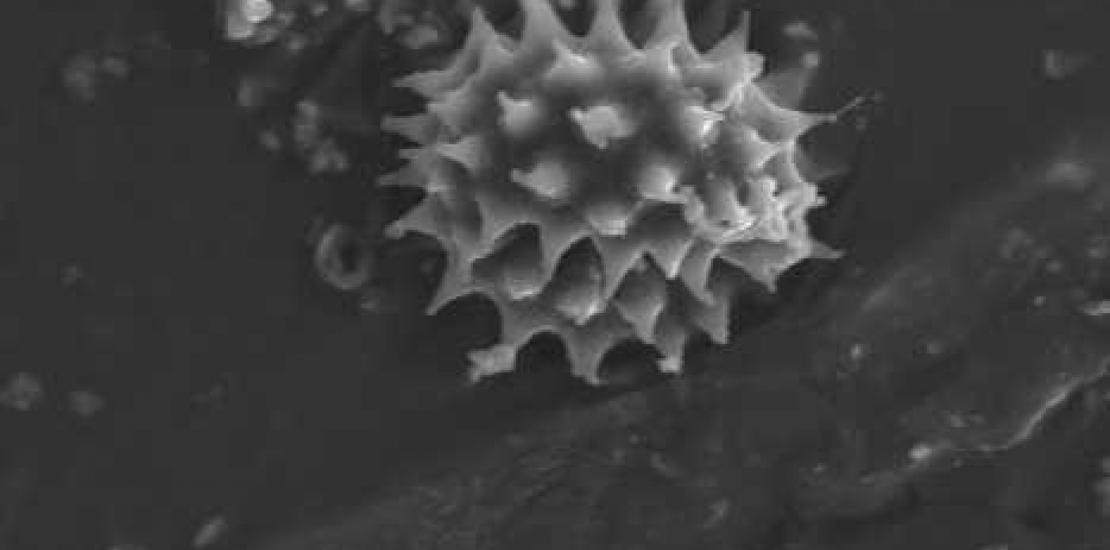UCAM's researchers have found scientific evidence that places the Shroud of Oviedo and the Shroud of Turin in the same scenario
The discovery has been made possible thanks to the scanning electron microscope with which the Catholic University of Murcia has identified blood and pollen cells
Shroud of Oviedo
A research group from the Catholic University of Murcia which is studying samples of the Shroud of Oviedo, has discovered a grain of pollen from one plant that, according to the Pollen Expert of EDICES, Marzia Boi, is compatible with the botanical species of Helicrysum Sp., also identified in the Holy Shroud (Shroud of Turin). Moreover, it has dropped the hypothesis of subsequent contamination, as the pollen is linked to the blood; which indicates that the pollen appeared on the shroud at the same time as the blood, and not any other point along its history. This is a very important fact because it helps prove the authenticity of the Shroud of Oviedo, and deny previous allegations of it being a forgery.
This research has been made possible as a result of the innovative scanning electron microscope which UCAM has in its posession. UCAM's President stated that the University acquired "the microscope to offer this service to the scientific community", to be able to investigate in depth the relic in question. This is a new finding, which goes beyond the initial research line on which the study is centered which is focused on human biological material.
As stated by the Chief of the Section of Forensic Histopathology of the Legal Medicine Institute of Murcia, and Director of the Research Team of the Spanish Centre for Sindonology (EDICES), Alfonso Sánchez Hermosilla, this discovery brings to light another connection between the two Shrouds, combining with the growing list of scientific studies of these relics attributed to Jesus of Nazareth. In fact, as shown by previous research, there are several features that link both relics. The Shroud of Oviedo contains human bloodstains that belong to the AB group, which is the same blood group found on the Shroud of Turin. In addition, the bloodstains of the Shroud of Oviedo fit mathematically with bloodstains found on the face of the Shroud of Turin, which can only be explained if the two cloths covered the same face.
Helicrysum
Helicrysum has been used for thousands of years for cosmetic purposes in the Middle East; it was also used in Jewish burials during the first century of the Christian era, so it is no surprise that it is found in the blood remnants of a cloth used to shroud a dead body.
Other research
Currently UCAM's research groups are working with the scanning electron microscope in several areas: in the field of engineering, comparative studies of materials and in the study of submarine samples; and in the field of health sciences they are working on the analysis of nano-encapsulated microanalysis of titanium dioxide materials (this work has been published in the Applied Catalysis B: Environmental Journal). In addition they are studying a human hair found in archaeological remains. Recently, the Cryo-SEM workstation has been launched, which will work with samples which by their nature, must be frozen, such as food samples.
Microscope Specifications
The scanning electron microscope MERLIN VP COMPACT, features automatic pressure regulation, which allows working with non-conductive samples without metallization. It has a resolution of 0.8 nm at 15 kV and is the lastest technology in electron optics. EDS microanalysis system, featuring Bruker QUANTAX 2000. Cryo-SEM QUORUM PP3010T workstation with preparation chamber for connection SEM (temperature range from -190 ° C to 100 ° C).




